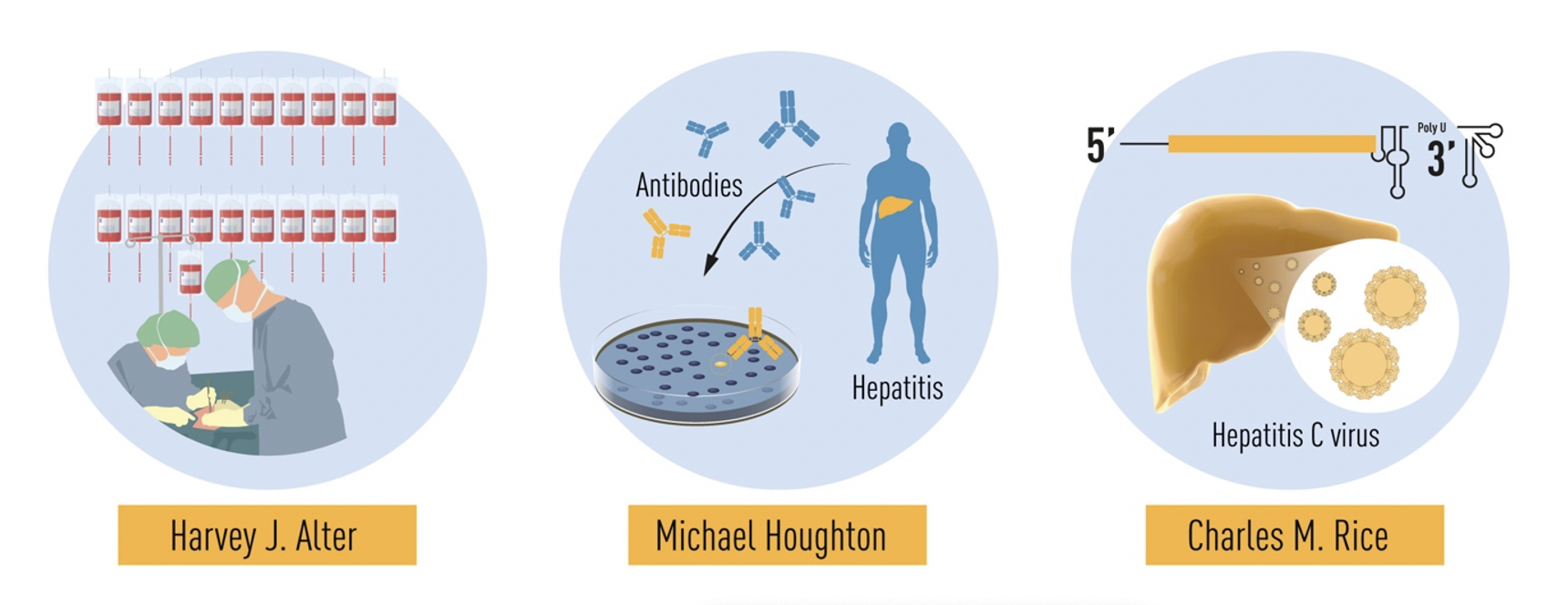*Terminology explanations found at the bottom of this page
Coronaviruses are viruses that infect the upper respiratory system and invade epithelial cells, causing disease. Coronaviruses are named for the structure that resembles a crown, or corona in latin, on individual virions under microscopy. This virus was first found in from samples collected from the noses of patients suffering from the common cold, but it has recently drawn media attention from the recent outbreak of 2019-nCoV strain of coronavirus, suspected to have originated from illegally traded wildlife in Wuhan, China.
Viral Infection: The Basics
Viruses are biological agents that consist of protein coats that are sometimes encapsulated in a membrane that contains DNA or RNA depending on the type of virus. Coronaviruses have single-stranded RNA. This genetic code is inserted into a host cell ( the cells of the individual infected) and the cell’s machinery is hijacked by the virus to produce the genetic code of the virus instead of the cell’s genetic code. Viruses cannot replicate outside of the host cell, so they need a host in order to reproduce. Coding begins, and the cell is now producing new virions that will burst out of the cell, killing the host cell in the process. The newly released virions will find more cells to infect and repeat the cycle. How does this cause disease? Viruses reproduce at a rapid rate, which means exponential numbers of host cells will be destroyed in the process of replication. Cell death = tissue damage. When tissues are damaged, the immune system responds by recruiting a number of immune cells to the infected area. These immune cells have a range of mechanisms to eliminate the pathogen, and they are usually the reason you suffer from symptoms. A fever is the immune system trying to essentially burn up the pathogen, inflammation is caused by damaged tissues releasing chemicals that recruit immune cells to come try and help get rid of the pathogen, and even coughing is the body attempting to get the pathogen physically out of the infected respiratory system. Most drugs cannot get rid of viruses (most pathogens like bacteria are killed directly by drugs, but viruses are not a living agent, so antiviral drugs prevent replication so tissue damage can be reduced) so they need to be eliminated from the body by the immune system in order for the infected individual to recover. This is why viruses pose such a serious threat to immunocompromised individuals, who cannot mount a response strong enough to eliminate the pathogen.
Why is an outbreak so concerning?
The human coronavirus strain SARS-CoV was the causative agent for the 2003 severe acute respiratory syndrome (SARS) outbreak that infected 8000 people and killed 774 during the 2003 outbreak. Another coronavirus caused an outbreak of Middle East Respiratory Syndrome (MERS) that infected 2500 people with 861 fatalities. The coronavirus that caused the SARS epidemic caused extremely severe disease by extending its infection into the lower respiratory tract, something that has not been observed with the 2019-nCoV. While the current outbreak is not either of these strains, there is concern for the virulence potential of 2019-nCoV as it is considered a new, novel strain.
Who is at risk?
Just like the annual flu season, viral epidemics are are typically more high risk for people who are considered immunocompromised, meaning their immune system is suppressed in some way, the elderly, pregnant women, and those with medical conditions that directly affect immune cells are part of this group. However, some viruses can take out perfectly healthy people. When healthy people are infected with some viruses, the immune system can sometimes mount and attack on the pathogen so powerfully that it causes a cytokine-storm, where cytokines (substances made by immune cells) are produced en masse and end up damaging the body in their attempt to damage the virus. Basically, the collateral damage caused by the immune system trying to eliminate the pathogen can be so severe, it is worse than the disease itself. As of now, most lethal infections of 2019-nCoV have been in people who were already considered high-risk, and not part of the healthy population.
How do we treat and prevent this virus?
Development of vaccines and treatments can be extremely difficult for this type of virus as coronaviruses are difficult to grow in laboratory conditions. Viruses are a particularly tricky pathogen to deal with. You’ve probably known someone who came home from the doctor frustrated that they didn’t receive any sort of prescription for their flu or stomach virus, claiming the doctor dismissed or ignored them, but all you can really do with viral infections is manage symptoms and treat secondary infections. Anti-viral treatment like valcyclovir is rarely prescribed for typical viral infections unless it is a severe infection, or for chronic management such as managing sore outbreaks in herpes patients, or for HIV patients reducing their viral load. Since targeting the virus is so difficult and mutations are rapid, we focus on managing symptoms with drugs to reduce fevers, reduce inflammation that causes coughing or pain, while monitoring for symptoms of secondary infection; like bacteria that may have taken the opportunity to colonize the lungs and cause pneumonia while the immune system was suppressed (known as an opportunistic pathogen). Diagnosis is not simple, and requires throat cultures and blood work to confirm a case of coronavirus as the symptoms are so similar to other diseases.
Some key facts to know:
- The current coronavirus is not SARS, but it is in the same family. Like how pilot whales and killer whales are within the same family; but there are clear distinctions between the two.
- Symptoms consist of a fever and respiratory issues like coughing, sore throat, or runny nose
- Prevention parameters have been outlined by Acadia: -Wash your hands frequently with soap and water, or use alcohol-based hand rub when hands are not visibly soiled.
· Cough or sneeze into your elbow or a tissue. If using a tissue, immediately place it in the waste disposal and wash hands.
If possible, stay at home when ill with acute respiratory symptoms. If this is not possible, limit close contact with others, avoid placing your hands on high-touch surfaces such as handrails, counters, and doorknobs
- The source of the virus is not definite, and there is no need to make racist remarks about the cultural practices of Chinese people in finding someone to blame for the outbreak. Zoonotic disease can result from any interaction between humans and animals. If you get salmonellosis from eating raw cookie dough, thats the same type of zoonotic transmission as someone getting a coronavirus from eating a wildlife product.
- The outbreak is considered under control as of now, with lessons learned from the SARS outbreak being put into practice. This outbreak is still very new, and the specifics about the virus are still mostly unknown, and information is changing constantly.
- Influenza, a disease that can be prevented by a simple vaccination, kills 3500 Canadians each year. The Coronavirus is new and unpredictable, and there is no prevention currently available, but you can always protect yourself from the viral enemies we do know with an annual flu shot.
*Understanding epidemiology/pathology 101:
Pathogen: A microorganism capable of causing disease such as virus, bacterium, fungi or protozoa
Strain: a viral strain is a genetically distinct type of pathogen. A common example is flu viruses with different subtypes, or strain.
Virion: A single viral particle that replicates to cause disease and pass the virus to others
Outbreak: sudden start of a disease appearing in a population
Epidemic: spread of an infectious disease quickly that affects more people than what is typical in a given area
Pandemic: a worldwide epidemic
Immunocompromised: an individual with an impaired immune system
Antiviral: a drug made to eliminate a virus from the body or reduce the viral load on an individual
Viral load: the number of copies of a virus in body of an individual
Virulence: ability of a pathogen to cause disease
Zoonotic: a pathogen that can be transmitted from animals to humans





